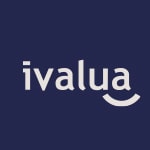Ivalua Named A Leader In The 2025 Gartner Magic Quadrant™ For Source-To-Pay Suites Report
View Report
Ivalua Named A Leader In The 2025 Gartner Magic Quadrant™ For Source-To-Pay Suites Report
View Report
Blog »

I was fortunate enough to attend the NCMA World Congress in Cleveland in July and was impressed by how the Federal Government is both embracing the use of emerging technologies to enhance their technical acquisition solutions as well as seeking to refine their Acquisition System user experience. Based on attending multiple presentations and speaking with over 50 attendees ranging from Contract Specialists through Chief Procurement Officers, I have the following 5 takeaways from the conference.
5 Key Takeaways from NCMA
Through its adoption of emerging technologies and a desire for a better user experience, the Federal Government is signaling its move away from those legacy acquisition systems deemed “adequate” for the job at hand. These emerging technologies when combined with an extensible robust Procurement Platform can yield greater efficiencies in cycle time, costs, category management and user experience.
That said, there seems to be a gap, according to a 2017 Governing Institute survey the tech-fueled purchasing revolution has been slow to catch on in most governments. Only 35 percent of respondents, for example, said they have up-to-date spending information and market metrics in their databases even though nearly two-thirds cited such areas as critical to success.
We are seeing things change fast however. At Ivalua, we continue to serve several public sector customers in their efforts to transform and digitize state, local and federal procurement. Our modern, proven cloud platform is uniquely designed to enable Procurement groups, users and suppliers to free up capacity, automate processes, make better decisions and take a strategic approach to managing spend and suppliers. The platform’s unique flexibility allows us to meet the many unique and evolving requirements of public procurement.
Ivalua has been recognized as a leader by Gartner for three consecutive strategic sourcing magic quadrant reports with capabilities from Sourcing and Contract Management through Procure-to-Pay and Advanced Analytics. Its open APIs allow integration with a myriad of systems including various ERPs.

Contributing writers from inside and outside Ivalua occasionally add items and information to this blog. We are a team who share an interest and curiosity about procurement and spend management.